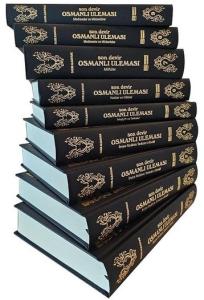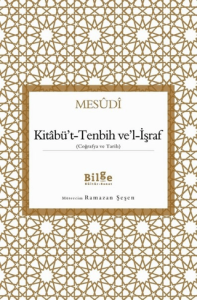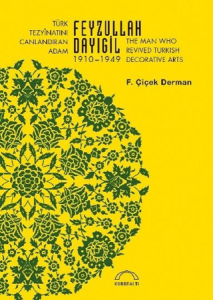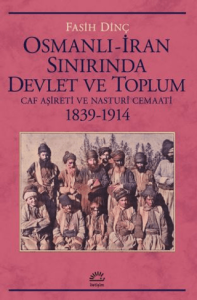
Sırrı sır eyle, filini tefekkür eyle, ikrârını sâf eyle, ahdine vefâ eyle, ibret ile bak, esrâr-ı erenler âgâh ol, varlığı aşka ver, Hakkı özünde mevcûd bil, mahbûb-ı cânda yok ol, fakr içinde fahr bul, ehl-i hâl ârif ol, fakr ü fenâda hoş bekâ bul
Mecmûatüz-Zarâif ve Sandûkatül-Maârif tarikatların edeblerini, usûllerini, tabirlerini, tarikat erbâbının kullandığı kıyafetleri, sembolleri ve manalarını ele alan mühim bir eserdir. Yazarı kendisini Yahyâ Âgâh bin Miskyağcı Sâlih elİslâmbolî en-Nakşbendiyyül-Kâdirî ez-Zenbûrî es-Sâdıkî mahlasıyla tanıtmaktadır. Eseri benzerlerinden farklı kılan en önemli yönü çizimleridir. Mecmûatüz-Zarâif bu yönüyle
tasavvuf ve kültür tarihimizde, mevcut bilgilerimiz ışığında, tek olma özeliğine sahiptir. El ve süsleme sanatlarına meraklı olan ve bunları icra eden Yahyâ Âgâh Efendi anlattığı kıyafet, eşya ve sembolleri resmetmek suretiyle bize tarihî öneme sahip belge ve bilgiler sunmuştur. Mecmûatüz-Zarâif teki resimler sayesinde çeşitli tarikatların kıyafetlerini, eşyalarını, sembollerini, bunların giyilme şekil ve âdâbını asli hâliyle öğrenme ve zihnimizde canlandırma imkânı buluyoruz. Benzer materyale bu yoğunlukta başka bir eserde şimdiye kadar tevafuk edilememesi Mecmûatüz- Zarâif ve Sandûkatül-Maârif in anlam ve önemini vuzuha kavuşturmaktadır.
INTRODUCTION
Mecmûatüz-Zarâif ve Sandûkatül-Maârif is an important work that deals with the manners, methods and terminology of the tariqats, as well as the clothing the tariqat members used, their symbols and their meaning. The author describes himself as Yahyâ Âgâh bin Miskyağcı Sâlih el-İslâmbolî en-Nakşbendiyyül-Kâdirî ez-Zenbûrî es-Sâdıkî. The most important aspect that differentiates this work from other works on similar subjects is the drawings. Mecmûatüz-Zarâif is unique in the light of the information it provides us about our tasawwuf and cultural history. Yahyâ Âgâh Efendi, who was interested in handicrafts and the decorative arts, and who carried out work in these fields, presents us with documents and information that have historical importance through the drawings of objects and symbols. Thanks to the drawings in Mecmûatüz-Zarâif, we have the opportunity to learn about and bring to life in our minds a great variety of tariqat clothing, objects, symbols; in addition, we learn about how the articles of clothing were worn and the manners and methods of the tariqat in their original form. The fact that this extent of material has not been encountered in any other work to date makes the importance and significance of Mecmûatüz-Zarâif ve Sandûkatül-Maârif clear.
Sırrı sır eyle, filini tefekkür eyle, ikrârını sâf eyle, ahdine vefâ eyle, ibret ile bak, esrâr-ı erenler âgâh ol, varlığı aşka ver, Hakkı özünde mevcûd bil, mahbûb-ı cânda yok ol, fakr içinde fahr bul, ehl-i hâl ârif ol, fakr ü fenâda hoş bekâ bul
Mecmûatüz-Zarâif ve Sandûkatül-Maârif tarikatların edeblerini, usûllerini, tabirlerini, tarikat erbâbının kullandığı kıyafetleri, sembolleri ve manalarını ele alan mühim bir eserdir. Yazarı kendisini Yahyâ Âgâh bin Miskyağcı Sâlih elİslâmbolî en-Nakşbendiyyül-Kâdirî ez-Zenbûrî es-Sâdıkî mahlasıyla tanıtmaktadır. Eseri benzerlerinden farklı kılan en önemli yönü çizimleridir. Mecmûatüz-Zarâif bu yönüyle
tasavvuf ve kültür tarihimizde, mevcut bilgilerimiz ışığında, tek olma özeliğine sahiptir. El ve süsleme sanatlarına meraklı olan ve bunları icra eden Yahyâ Âgâh Efendi anlattığı kıyafet, eşya ve sembolleri resmetmek suretiyle bize tarihî öneme sahip belge ve bilgiler sunmuştur. Mecmûatüz-Zarâif teki resimler sayesinde çeşitli tarikatların kıyafetlerini, eşyalarını, sembollerini, bunların giyilme şekil ve âdâbını asli hâliyle öğrenme ve zihnimizde canlandırma imkânı buluyoruz. Benzer materyale bu yoğunlukta başka bir eserde şimdiye kadar tevafuk edilememesi Mecmûatüz- Zarâif ve Sandûkatül-Maârif in anlam ve önemini vuzuha kavuşturmaktadır.
INTRODUCTION
Mecmûatüz-Zarâif ve Sandûkatül-Maârif is an important work that deals with the manners, methods and terminology of the tariqats, as well as the clothing the tariqat members used, their symbols and their meaning. The author describes himself as Yahyâ Âgâh bin Miskyağcı Sâlih el-İslâmbolî en-Nakşbendiyyül-Kâdirî ez-Zenbûrî es-Sâdıkî. The most important aspect that differentiates this work from other works on similar subjects is the drawings. Mecmûatüz-Zarâif is unique in the light of the information it provides us about our tasawwuf and cultural history. Yahyâ Âgâh Efendi, who was interested in handicrafts and the decorative arts, and who carried out work in these fields, presents us with documents and information that have historical importance through the drawings of objects and symbols. Thanks to the drawings in Mecmûatüz-Zarâif, we have the opportunity to learn about and bring to life in our minds a great variety of tariqat clothing, objects, symbols; in addition, we learn about how the articles of clothing were worn and the manners and methods of the tariqat in their original form. The fact that this extent of material has not been encountered in any other work to date makes the importance and significance of Mecmûatüz-Zarâif ve Sandûkatül-Maârif clear.










